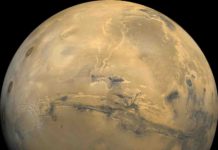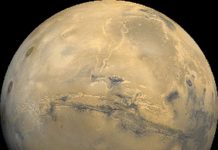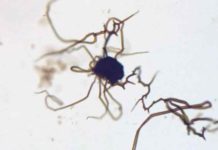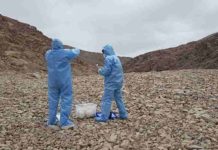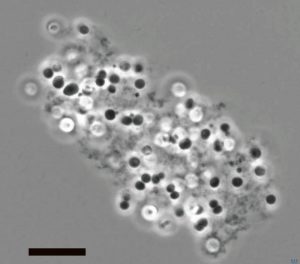
A year and a half on the outer wall of the International Space Station ISS in altitude of 400 kilometers is a real challenge. Whether a primordial bacterium survives this procedure, is a scientifically interesting question. Today, the space experiment BIOMEX (Biology and Mars experiment) was brought from the International Space Station (ISS) back to Earth by the cosmonauts Tim Peake, Yury Malenchenko and Tim Kopra within their Soyuz-Capsule. In the framework of the BIOMEX project, which is coordinated by Dr. Jean-Pierre de Vera from the German Aerospace Center (DLR), microorganisms isolated from Siberian permafrost were among others exposed to Mars-like conditions in space for 18 months.
Is there life on Mars?“ This question raised by the pop artist David Bowie and addressing life on our neighboring planet remains unanswered until today. It is no doubt that the molecular building blocks of life are available in the universe and that early Mars, as a planet with moderate climate conditions, offered the potential that life developed also on our neighboring planet. To learn more about the possible life on Mars, Prof. Dirk Wagner and his team from the German Research Centre for Geosciences GFZ (Section Geomicrobiology), have done numerous experiments with the microorganism Methanosarcina soligelidi SMA-21 – a methane producing archaeon isolated from Siberian permafrost. The survivability of this microorganism was tested under extreme environmental conditions such as extremely low temperatures, high salinity, dehydration and radiation. This primordial bacterium has been found to be extremely resistant to the conditions tested. Due to the specific metabolism of Methanosarcina soligelidi and its high resistance to hostile conditions, this organism is considered as a model for possible life on Mars.
In order to test the survivability under Mars-like conditions, microorganisms along with other “candidates” were kept in the experimental module EXPOSE-R2 being exposed to the outside of the ISS for 18 months. GFZ scientist Dirk Wagner: “During this experiment, the microorganisms were kept on Mars-like minerals and exposed to a Martian atmosphere and the radiation conditions that prevail on Mars. The aim of the experiment is to test the long-term survival of Methanosarcina soligelidi under these conditions.”
Today the test-organisms returned from the ISS to their home planet, and will be thoroughly analyzed in the coming weeks at the GFZ German Research Centre for Geosciences in Potsdam, Germany. Even if the organisms should not have survived the exposure to a Mars-like environment, the remaining cell components will be examined in detail. These data will then be integrated into a biosignature database that is created in the framework of the BIOMEX project. The obtained information can be used in future missions to search for traces of life on Mars or elsewhere in the universe.
Note: The above post is reprinted from materials provided by GFZ German Research Centre for Geosciences.




